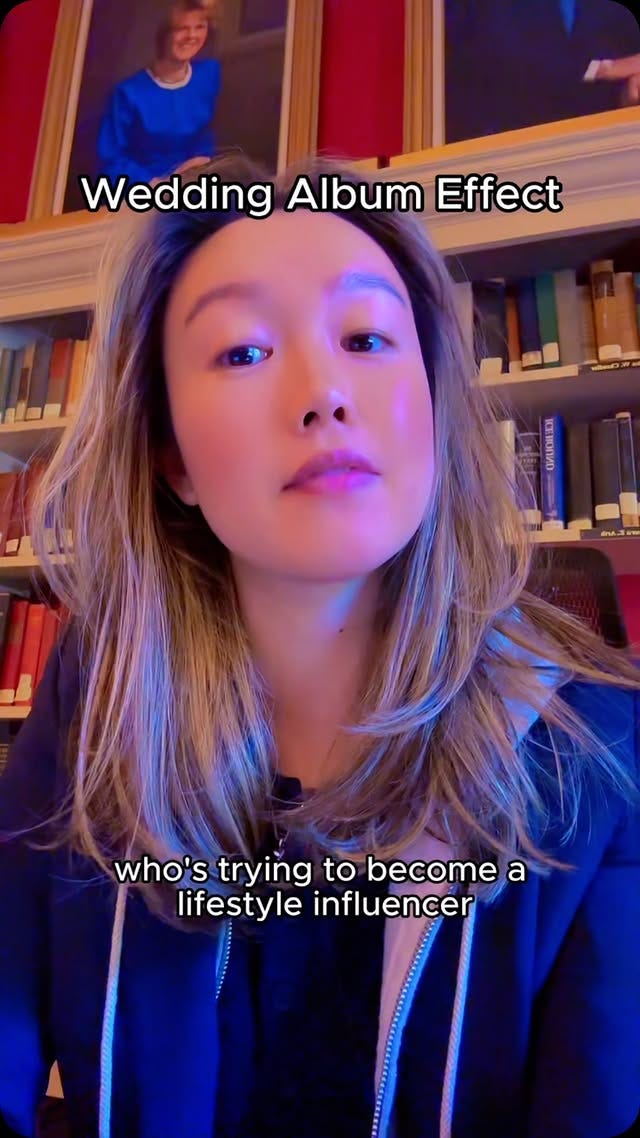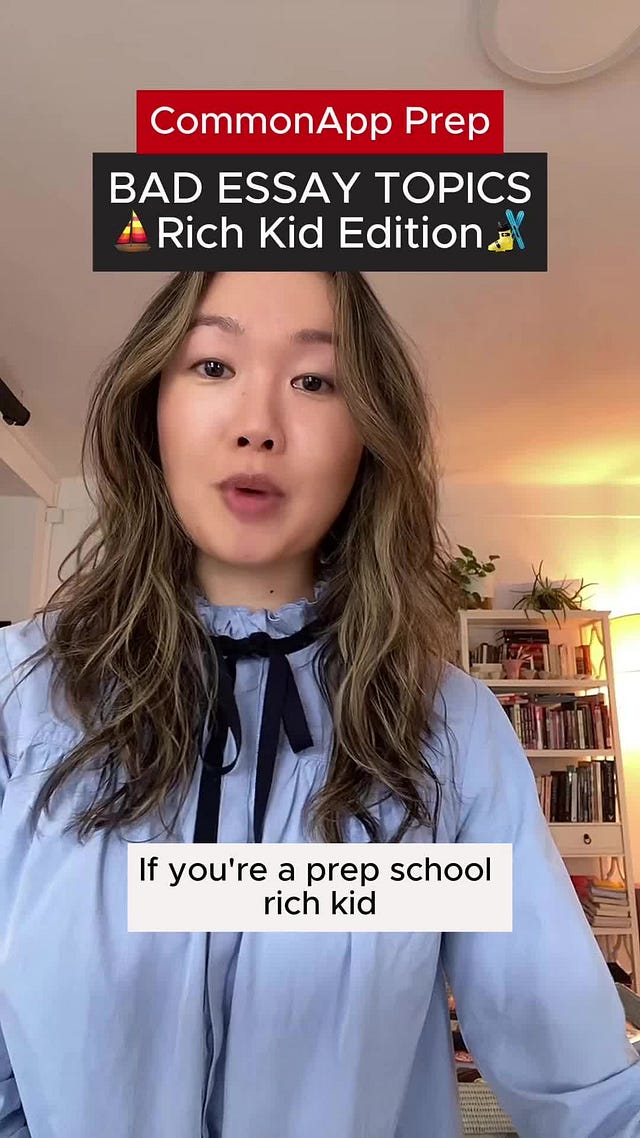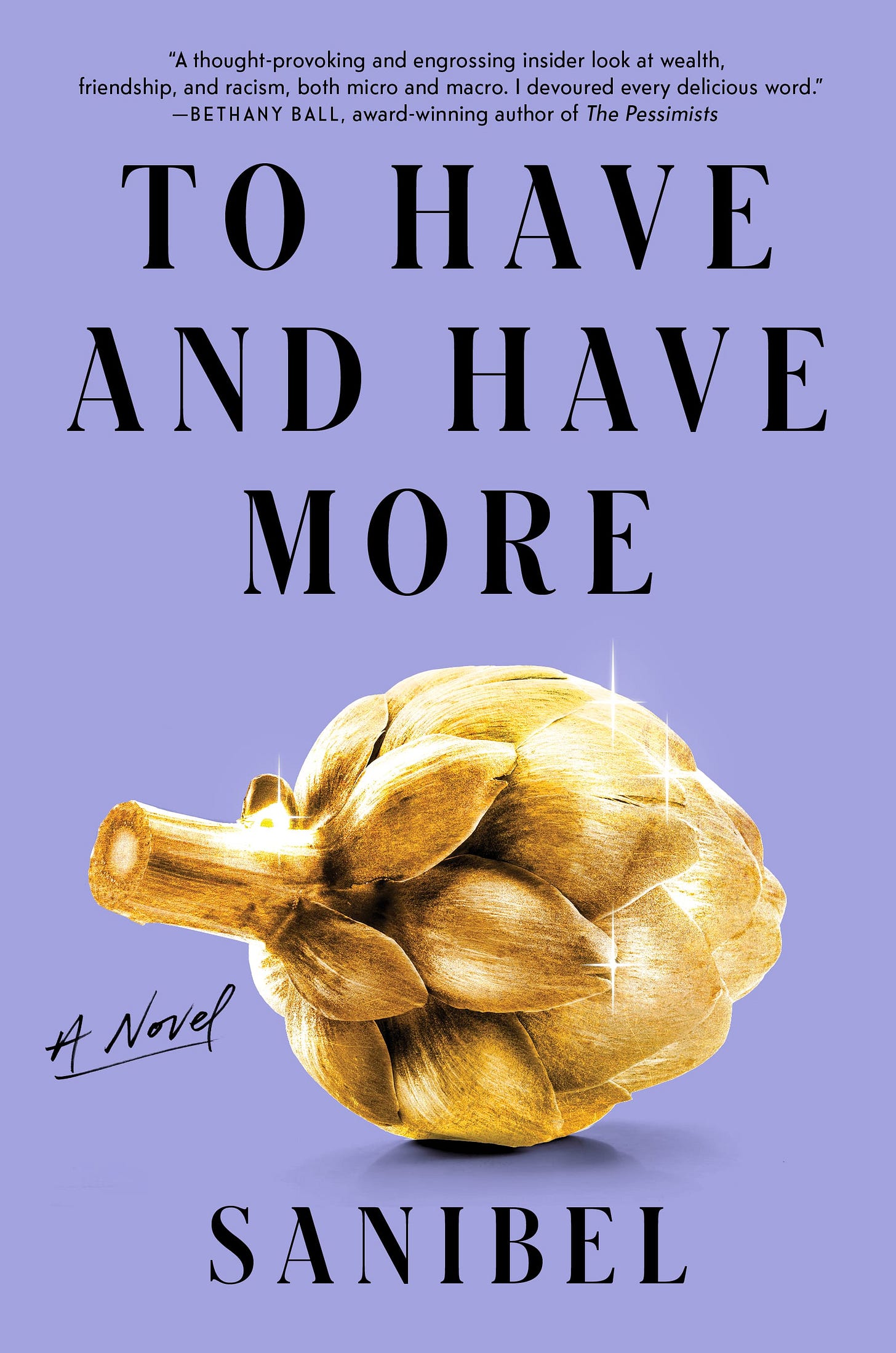Diamonds, you have until tomorrow to watch the replay of my conversation with BookTok strategist Alyssa Morris!
If you opened Instagram this week, you probably saw two things: a celebration of independent bookstores, and content promoting a Barnes & Noble sale offering 25% off preorders to members.
Authors of forthcoming titles (including yours truly) were notified by the marketers at our publishing imprints to share the B&N sale with our audiences.
has written about what an amazing PR machine James Daunt has behind him at B&N—I would “yes and” that to say and look at how they’ve gotten authors to do their advertising for them!If there’s one thing I’ve learned from being on TikTok for three years, it’s that you have to hide your self-promotion inside content that is entertaining, interesting, or inspirational. It’s easy to ignore or scroll post ads. You and I do it every single day. If you want your audience to take action (buy your book), you’ve got to create content that does not look like an ad.
For more advice on creating content that people actually want to watch, I bring you an interview with the Golden Artichoke Queen herself, Sanibel, author of the debut prep school satire To Have and To Have More. This is one of my favorite interviews I’ve ever done—there is advice in here for social media beginners, advanced beginners, and even oldest daughter know-it-alls like me.
1. Ninety percent of the novelists I follow on the internet post promotional content: please preorder my book, here are my book tour events, here's something nice someone else said about my book, reminder to please preorder my book, etc. You took a different approach to your content strategy in the months leading up to launch.
What was some of the first content you created? Did you have to try different things, until you found a format that worked?
My very first posts (many of which are still up) are voiceless (as much as I can be), to-the-point explainers of how to write a good college essay (my main source of income is college essay consulting). These explainers were a great way to cut my teeth because giving “how to” instructions on something I felt confident in was straightforward as I was figuring out the app and getting comfortable on camera.
A video that failed dismally (after a ton of work) was a “day in my life” as a commerce journalist. My husband shot and edited it beautifully (he’s a cinematographer), I spent a long time scripting and recording a voice over, and it completely tanked. That was the first time (of several) that I learned the lesson about wedding album content—if people aren’t already deeply invested (obsessed) with you, they do not want to hear about your day to day.
I’m not famous, strangers on the internet have no reason to stop the scroll when they see my face (or my cover reveal)—as a nobody, I need to provide entertainment to get eyeballs. TO HAVE AND HAVE MORE has many buzzy themes (rich kids, prep school, status symbols, mean girls, ivy league applications), so the idea was to use these topics as clickbait then plug my book at the end. My social media persona mimics the tone of my book (satirical, acerbic, a little bitchy/caustic) so my content conveys more than just the subject matter (class/race/privilege); it’s a preview of the voice/sense of humor of TH&HM. I try to think of every post as stealth self-promotion where I reel you in with something shiny (an inflammatory take on rich people, rage bait) but, hopefully, you stay for my voice and commentary.
The format that works for me is very simple: just talking at the front-facing camera, sometimes with greenscreen, sometimes walking in city streets (I think this makes it seem off the cuff and “authentic” but I’m reading from a script). For a moment I leaned into nostalgia content because a simple video I did on the defunct Ralph Lauren brand Rugby did very well even though all I did was describe the brand. A similarly simple video describing the Hey Arnold Christmas special performed well, too. People like slightly niche, nostalgic content but since I don’t want to be a millennial-00s-throwback influencer, I didn’t press on that lever much more.
2. What are some videos that failed, or other embarrassing moments? I think many writers give up here, during the trenches of embarrassment.
Most of the times I’ve attempted topical content (reacting to a viral essay in THE CUT, commentary on a hot TV show everyone’s watching) it didn’t go well. First off, I was competing with every other creator who was covering the same trending topics. Secondly, I didn’t necessarily have anything to say (because it was topic-first engineered) so my commentary was some lukewarm drivel I came up with rather than my usual, self-motivated “I need to get this off my chest” ranting.
Some people find it embarrassing when a video flops. It might be a waste of time but I don’t find that embarrassing. If anything, I find playing into the clickbait ecosystem intellectually embarrassing. When I post five “rich people do this” videos in a row I do wonder what my acquaintances think. My friends know it’s promo for TH&HM but the thought crosses my mind that, to everyone else, I must look like a materialistic person who’s obsessed with money…but I have to get over that.
I’ve definitely improved as a video editor and as a “performer” since I started making content last year so it can be cringey to look back at my early videos: they’re much slower paced (the cuts aren’t quick enough), I talk slower, I’m more awkward, you can see me reaching to hit the start/pause button—but, thankfully, TikTok is not about slick videos so those imperfections don’t necessarily hurt video performance.
3. What was the first video that took off and made you realize I should do more like this?
BAD ESSAY TOPICS Rich Kid Edition. That was the seventh video I made and I knew I had done something right when people kept commenting “the algorithm missed but I love this.” It was a list of common (bad) essay topics that prep school kids always write for their college essays. In theory the video was tailored to and audience of high school students but what people of all ages latched onto (I suspect) was the wealth voyeurism element (hence another comment: “I’m 50 years old but I want to see more of this.”)
After this video took off, I made 8 Stealth Privilege Status Symbols and it also performed well. I realized that people like (but don’t love) wealth content such as “10 brands rich people swear by” because it’s too on-the-nose (and it’s been done a million times). I’m guessing the appeal of these two videos lies in the oblique approach. The wealth I described was not conspicuous consumption/luxury goods, but the secondary characteristics of privilege, which is more interesting.
The oblique content strategy is the main thing I teach in my social media class, which is running June 28-29.
4. Aside from "I will die from embarrassment," the second-most common anxiety I hear is "I'm afraid I don't have time for this." How much time a day, or a week, do you spend creating video content? Any time-saving hacks? Your best tip for beginner video content creators?
An hour per video (30 minutes minimum) is my rough estimate, but it moves a little faster when I shoot/edit in bulk. The process (writing, editing, filming, editing video, adding headline/subtitles, uploading in app) takes up more of my time—I’d guess 8-10 hours per week—than I’d like. I started using ChatGPT to write the captions (as in, the video description—not the closed captions) because (as I understand it very murkily) the algorithm uses your subtitles and caption to know where to serve it (hashtags are dead). It was time consuming to write long captions and they don’t need to be wonderful quality so I rely on AI for that piece. I feed ChatGPT the transcript of my video (which is a free feature in CapCut) and use what it generates pretty much as-is because people are not reading them. [LS: This is the second time this week I’ve learned that I’m doing hashtags and captions on TikTok all wrong.]
I script almost all of my content (~10% exception). I wonder if people think it’s off the cuff but I’m speaking in complete sentences, which is not how anyone speaks naturally. My videos are essays that I am performing.
The main time saving hack I’d mention is film in bulk. Shoot four in a row (change your top in between) because it’s easier when you get into a rhythm. Edit in batches, too. Also, you’ll waste a lot of time checking the performance of your videos (especially if one takes off) so limit yourself to checking the stats once a day. One more: I usually bring a script with me whenever I go out because it’s nice to vary the background of your videos. If I’m killing time waiting for someone who is late to dinner, I’d rather spend it making content than consuming it.
Tip for beginners: try a handful of low-stakes, educational videos about a subject you know well. Learn how to edit and use the app and write captions and track views on these “throwaway” videos and save your best ideas for when you have more fluency in how it works.
Finally, strive for MVP (minimum viable product) content (FYI this is the opposite of what I’d say for writing.) I’m not recommending low-quality or lazy ideas, but the simplest (and most efficient) execution of a good idea is sufficient. You don’t need to look your absolute best, you don’t need to film in an “aesthetic” environment, you don’t need any equipment (mic/ring light). As an author, you want people to follow you for your thoughts not appearance.
5. How do you think about TikTok and Instagram differently? If a writer doesn't want to be on TikTok, do you think they could create all their content on Instagram or do you think there's a special magic to TikTok?
I think of TikTok as my testing ground and Instagram as my more polished “brand.” I’m not precious about consistency on TikTok, whereas on Instagram, every post is in service of TH&HM. I use Stories/highlights on Instagram to do event promotion but I have yet to use Stories on TikTok.
I record in TikTok because the greenscreen is the easiest to use (and the retouch is the most flattering) then I edit in CapCut (desktop). I post on TikTok first and if it underperforms (based on my unscientific, personal opinion about how well it should do), I’ll change the headline before posting on Instagram.
I’ve shot/edited a few videos completely in Instagram—it’s definitely possible, but it’s glitchy. I’ve lost drafted content (maddening) and the subtitle editing is really clunky, so I prefer CapCut (desktop). But Instagram just came out with a creator-friendly app called Edits (which I experimented with a little) and it’s a great solution for writers who do not want to learn TikTok but want to start making Reels.
From what I understand, the magic of TikTok is in how your videos are served, so I don’t think it necessarily matters where you edit them. I find my content performs better (and with more consistent views) on Instagram in comparison with TikTok, which feels more boom-bust. My small handful of high-performing videos have received significantly more views on TikTok (compared with Instagram), but I’ve also had way more flops on TikTok (that did decently on Instagram).
6. What's been the most pleasantly surprising thing to happen since you started creating video content?
Not to be a kissass, but meeting you is up there! [LS: 💀] When authors I admire reach out or even just “like” a post, I really appreciate that it gives me a reason to thank them/start a dialogue and not feel that I’m “bothering” them. Any writer who’s had to ask for blurbs understands how grimy it feels to write to a stranger you admire for the first time and ask a favor in that same message (against all rules of etiquette that I follow).
Another perhaps less pleasant, but very useful, side effect of making content is that I’m taken more seriously. Follower count is another metric to prove your worth to publishers who want to make money from your art. I think everyone from agents to editors to other authors clock my follower count and it “legitimizes” me even though my social media content has no (or at least little) bearing on the quality of my fiction (if I think about this too much I get disheartened). It almost reminds me of stories I’ve heard about how women lose a lot of weight and suddenly people treat them much better. I’ve been a struggling writer for a long time, but more than selling my book or getting bylines, having some traction on social media is the thing that impresses others most.
7. Finally, let's talk about your visual brand identity! You brought the color periwinkle and the golden artichoke from your book cover to your video content. Do you think having these consistent visual signifiers helped you grow your audience?
Absolutely. Sometimes I feel icky about being a marketing genius leaning so heavily into what I’ve learned about product marketing as a commerce journalist, but the public loves a strong brand. They love a slogan (I experimented with this in some of my early videos but it felt too cheesy). They love a mascot. I suspect this affinity for identifiable brands exists because people prefer reductive things that make the world feel digestible. While I don’t love this simplification, I’ll be the first to admit that reducing my book to periwinkle+goldenartichoke+richkids+prepschool has undoubtedly served me (plus, your official publishing team may do this to your book anyway).
In many of my videos, I hold a golden artichoke (a nod to the design of my cover). A very sweet friend bought it for me without any intention of it becoming a promotional object. I did not anticipate that holding the golden artichoke would be a good “strategy” but in a strange way the part of it that worked most was that it created a question. People wanted to know why I was holding it and (a few) people watched to the end specifically because they wanted an explanation. There’s an odd power in doing something that “doesn't make sense” and also not answering the question (I saw a few exchanges in the comments that said “what is the gold artichoke??” and other people replied “no one knows” as if it were some long-standing mystery).
Thank you so much for including me in your Substack!
Told through the eyes of a Korean girl adopted into a wealthy white family, this darkly funny debut explores casual racism, privilege, and the complexities of friendship.
TO HAVE AND TO HAVE MORE is available now from Amazon, Barnes and Noble, and Bookshop.org.
Behind-the-scenes of my novel worldbuilding
For my diamond medallion members, here’s an update on the worldbuilding I’m doing exactly four months out from the launch of If You’re Seeing This, It’s Meant for You.









